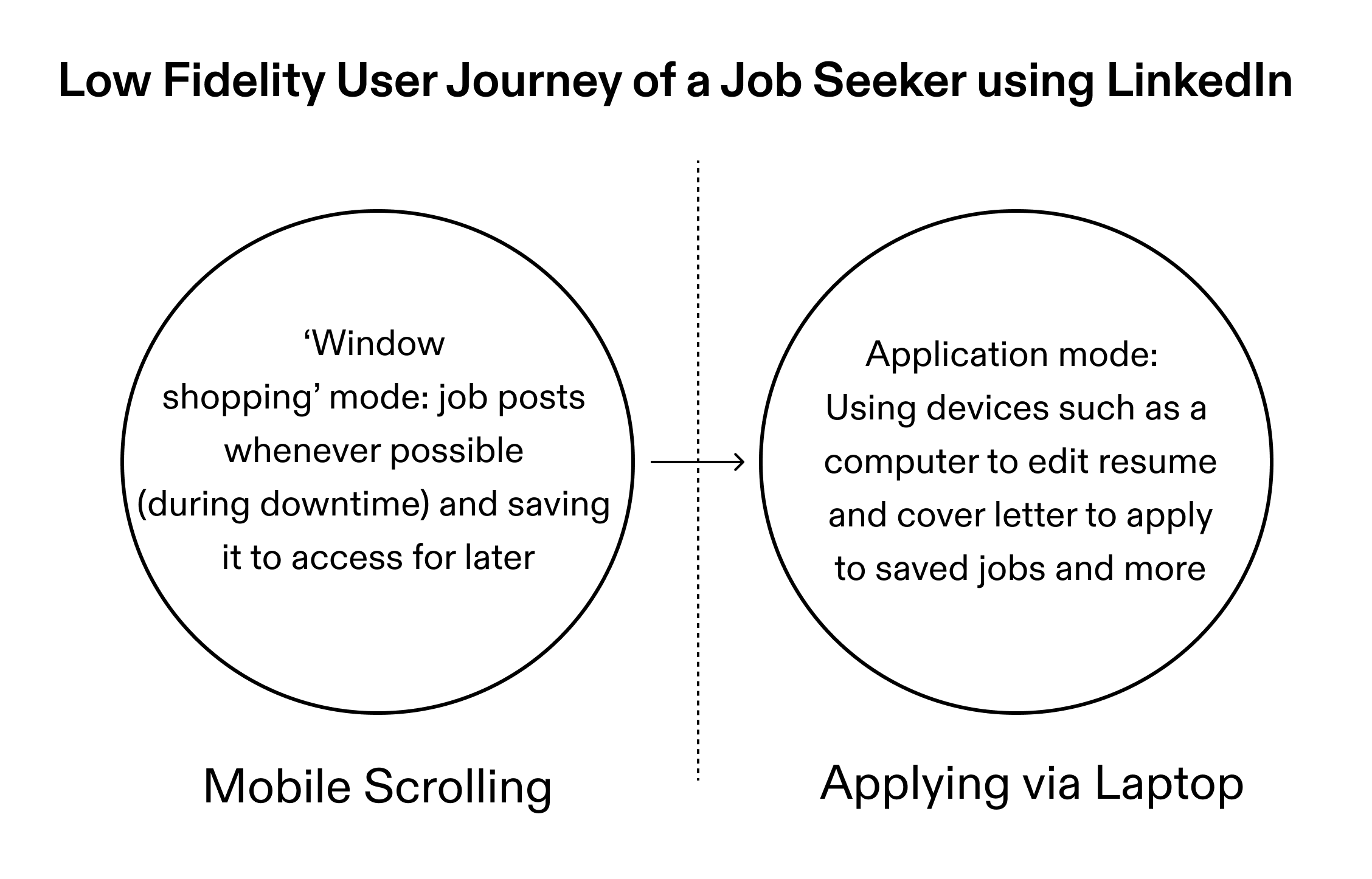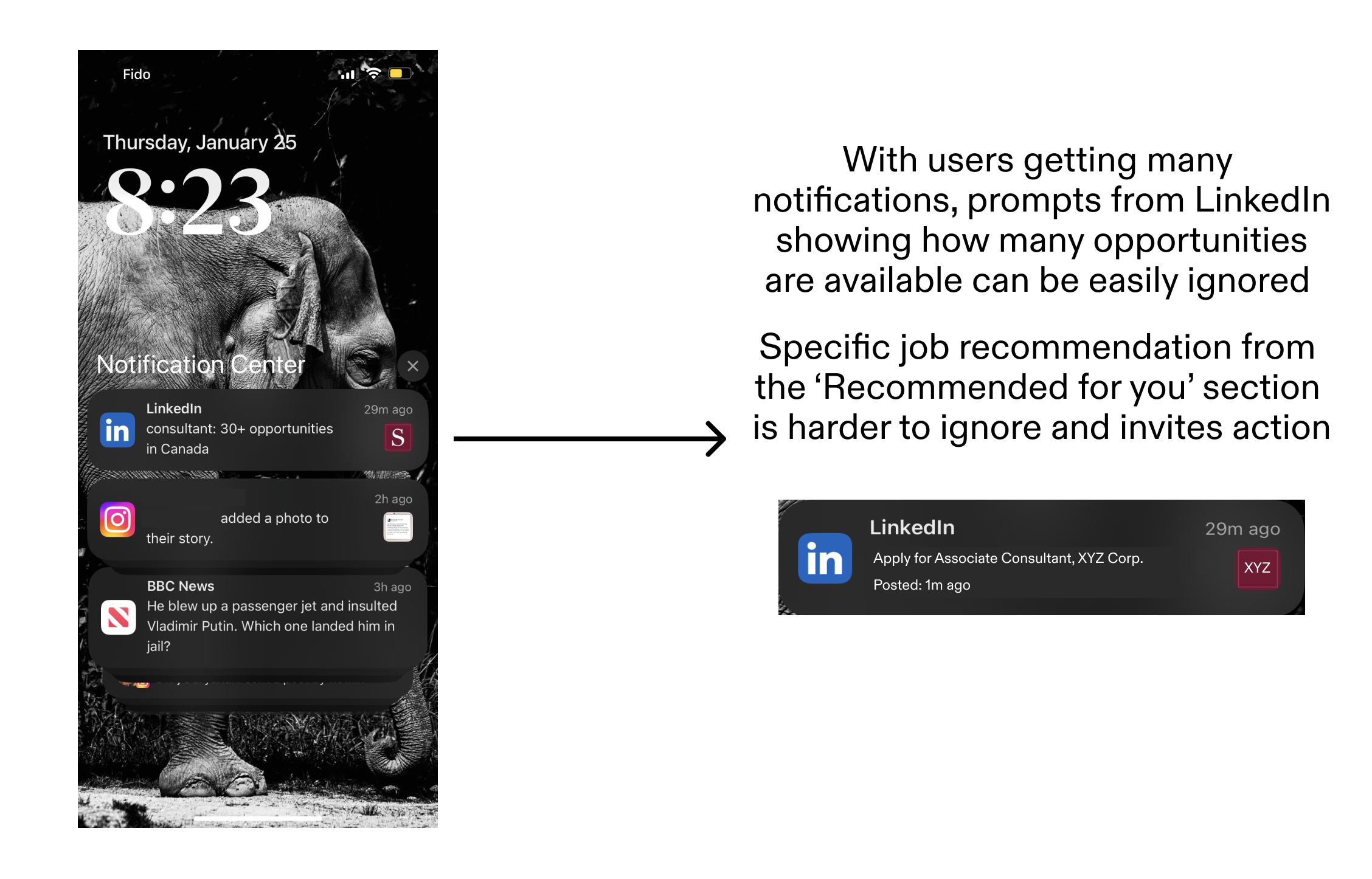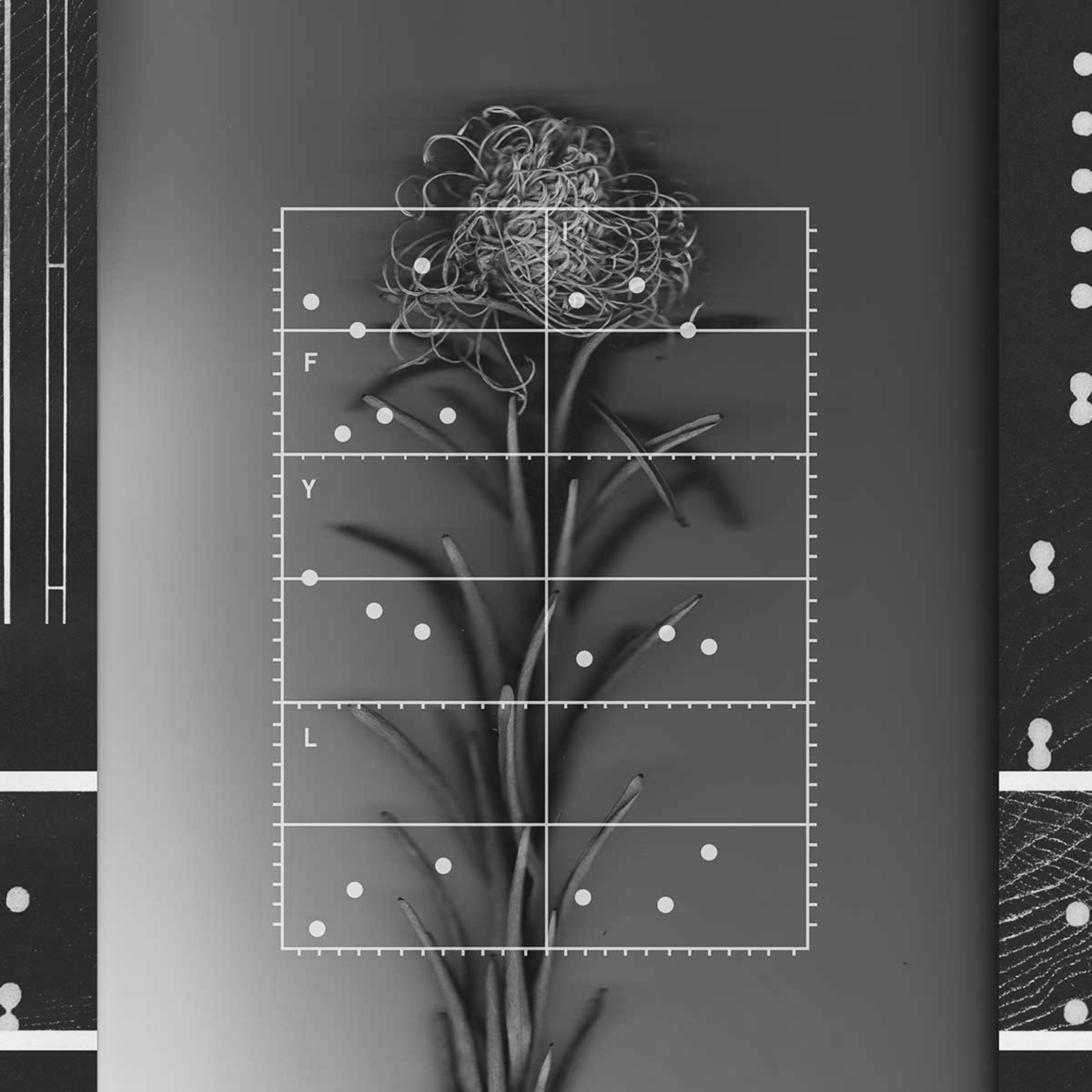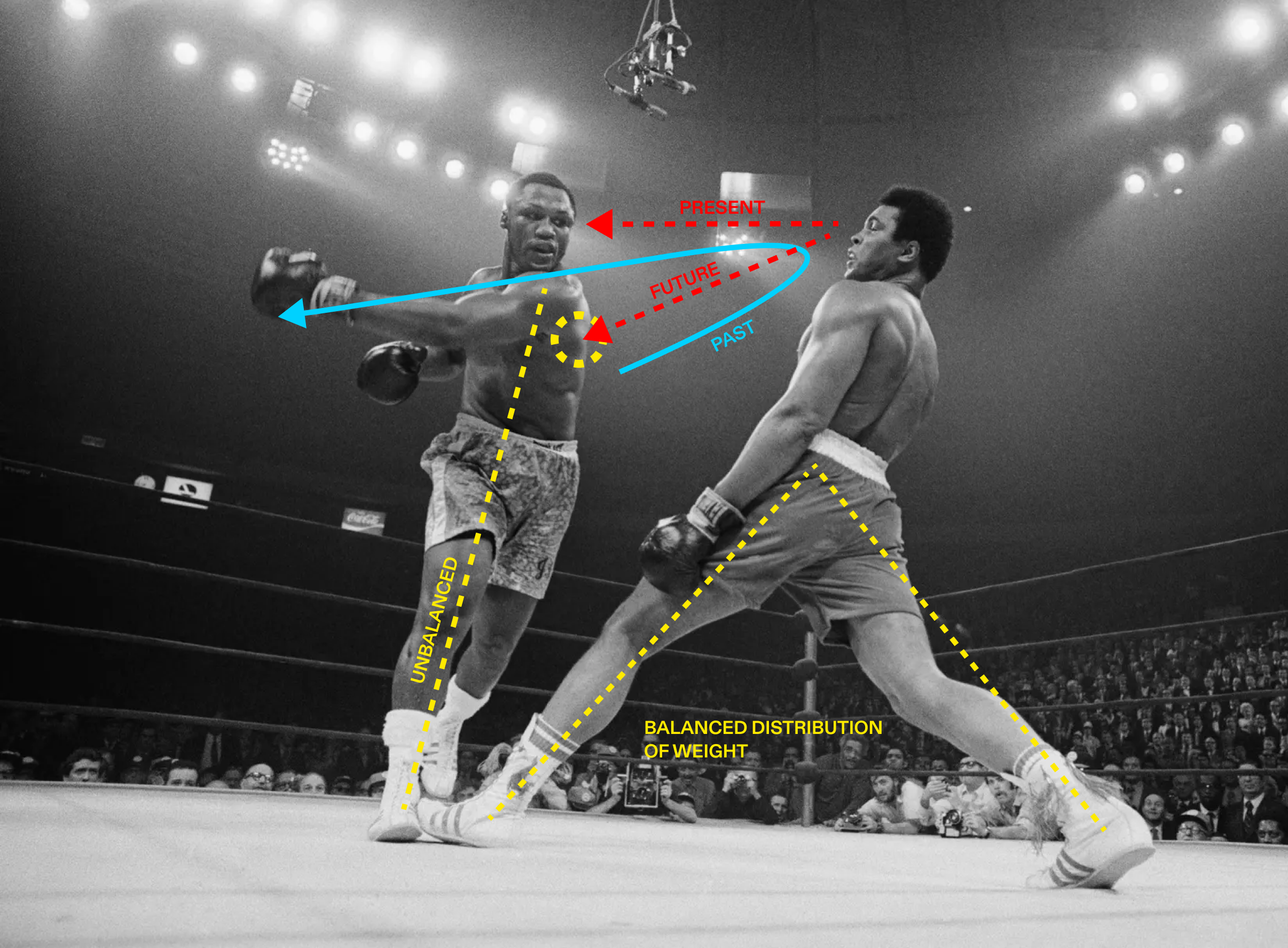
Enhancing the Job Hunting Experience on LinkedIn: A Flow-Based Approach
2024
By Nithin Eluvathingal
In the ever-evolving landscape of the digital job market, LinkedIn stands as a towering beacon, guiding millions in their quest for professional fulfillment. This platform has revolutionized how we seek, apply, and network for career opportunities. However, beneath the surface of this bustling marketplace lies an emotional journey, often fraught with anxiety and uncertainty. Job hunting, by its very nature, can be a labyrinthine endeavor, challenging even the most seasoned professionals. It is here, in this complex interplay of aspiration and apprehension, that we find a unique opportunity to reimagine the job search experience through the lens of 'flow'.
The concept of flow, eloquently articulated by Mihaly Csikszentmihalyi, offers a profound understanding of how people engage deeply and meaningfully with activities. Flow describes a state of heightened focus, enjoyment, and a harmonious sense of being in the moment. When in flow, individuals experience a sense of effortlessness, timelessness, and intrinsic motivation, driven by a balance between challenge and skill. This psychological framework, primarily explored in contexts of creativity and leisure, holds untapped potential when applied to the world of job hunting.
The following sub-headings refer to the eight traits of ‘flow’ as described by Mihaly. The idea is to understand how LinkedIn may or may not be inducing a state of ‘flow’ in their job searching features.
![]()
1. Effortlessness and Ease:
The key to maintaining user flow is creating a product that's both intuitive and high-performing. There's nothing more disruptive to flow than a product that's difficult to use. LinkedIn excels as an all-in-one platform for professional needs. In an era where life's aspects are compartmentalized into specific apps - social on Instagram and WhatsApp, entertainment on Netflix and YouTube, services on Uber, shopping on Amazon - LinkedIn distinctively stands as the definitive professional hub. This segregation reduces cognitive overload in our app-saturated world. LinkedIn's success lies in its consolidation of professional activities, from job applications to networking, all in one seamless platform.
2. Complete Concentration on the Task:
LinkedIn's 'Jobs' section, with its dedicated search bar and filters, is an excellent example of facilitating focused task execution. The key is to minimize distractions and irrelevant stimuli. LinkedIn generally does well in this regard, offering a clean content hierarchy tailored to user needs.
![]()
While LinkedIn's platform offers many user-friendly features, there are opportunities for enhancement. The 'Recent Searches' section on the landing page, for instance, could benefit from a rethink. Its current placement feels somewhat redundant, as users can readily access their recent searches by simply clicking the search bar. A more streamlined approach would improve the overall user experience and declutter the landing page.
Additionally, the positioning of the 'Recommended for you' section warrants reconsideration. Elevating this feature on the page would be advantageous. Many job seekers, while certain about their desired industry, often find themselves unsure about the specific job titles to target. This uncertainty is compounded by the fact that companies frequently use varying titles for similar roles. By making the 'Recommended for you' section more prominent, LinkedIn can better guide users towards suitable opportunities, simplifying their job search and enhancing the platform's utility in matching job seekers with relevant positions.
3. Clarity of Goals and Immediate Feedback:
Job searching is often a lengthy and tedious process. It's crucial to provide clear actions and feedback to users. LinkedIn's 'Recommended for you' feature is a step in the right direction, but there's more to be done. Incorporating a feature that allows job seekers to set daily application goals could significantly enhance their experience on LinkedIn. Think of a progress bar that reflects weekly targets, updating in real time with each submitted application. This gamified element would not only make the process more engaging but also provide a clear visual representation of progress, boosting user motivation. To further incentivize users, LinkedIn could offer rewards, such as InMail credits, upon reaching certain milestones, adding an extra layer of encouragement.
To illustrate this concept, let's look at Airbnb. Within its profile section, highlighted by a notification, there's a progress indicator for tasks that streamline future bookings. Completing these tasks in advance reduces friction later in the user journey. Similarly, introducing a progress tracker on LinkedIn for weekly application goals could infuse the job search process with an element of fun and accomplishment.
The design of this progress tracker could range from a simple linear indicator to something more dynamic and visually appealing, akin to the excitement generated by EA’s FC 24. Such an approach would not only keep users engaged but also make the task of job application less daunting and more rewarding.
![]()
4. Transformation of Time:
Products should enable users to easily re-engage and continue their tasks. LinkedIn sends reminders about saved jobs and potential opportunities, which is helpful. However, the notification system could be more personalized. Instead of general statements like “30+ jobs available in Canada,” more specific, tailored notifications about individual job recommendations would be more engaging. For a job seeker who's just finished a day's work, the prospect of exploring 30 new jobs is overwhelming. A focused, one-at-a-time approach would be more effective.
![]()
5. Knowledge that the Activity is Doable:
It's essential to equip users with the necessary tools and capabilities to succeed on your platform, avoiding any unnecessary steps that could lead to user fatigue. This is particularly relevant for LinkedIn users, especially active job seekers. Job hunting can quickly become a monotonous and tiring process. Presenting data like the percentage of applicants with a master's degree or those in senior roles might trigger anxiety rather than motivation.
The ideal balance lies in the 'flow channel' – the sweet spot where a task's challenge level matches the user's skill set. This is where user experiences are optimized, making tasks feel achievable without causing undue stress or disinterest.
![]()
One specific challenge for job seekers on LinkedIn is the task of scrolling through job postings only to find key eligibility criteria at the end. Often, by the time they reach this information, they are already emotionally invested in the role, particularly if it aligns closely with their aspirations. This can lead to frustration, especially if they discover they do not meet the requirements. A more user-friendly approach would be to present eligibility criteria at the beginning of the posting, helping job seekers quickly assess their fit and manage their expectations from the outset. To implement this, companies posting jobs on LinkedIn could be encouraged, or even required, to include clear eligibility criteria as part of their job listings. Placing this essential information at the beginning of the post would streamline the application process, saving job seekers valuable time and effort in identifying opportunities that match their qualifications and experience. This modification would not only improve efficiency but also contribute to a more transparent and user-centric job search experience on the platform.
6. A Sense of Serenity
Achieving a state of serenity in a task means being free from worries about oneself, with a focus on the task at hand. For LinkedIn users, particularly job seekers, this translates to creating an environment that minimizes stress and anxiety. A serene user experience could be facilitated by offering clear guidance and support throughout the job search process. LinkedIn provides tips on profile optimization, effective job search strategies, or how to tailor applications to specific roles, thus reducing the anxiety associated with job hunting and enhancing the user's confidence.
7. The feeling of Control
This aspect is where LinkedIn truly has the potential to stand out from other job search platforms. The process of job application often involves managing various versions of resumes and cover letters, tailoring them to suit different job opportunities. Typically, this task involves using external tools like Google Docs or Microsoft Word, followed by converting these documents into PDFs and then uploading them to job portals. The need for constant editing and re-uploading can be a tedious and frustrating process for job seekers.
![]()
My proposal is for LinkedIn to introduce a feature that allows users to edit their resumes and cover letters directly within the platform. By integrating a document editor and enabling direct uploads, LinkedIn can offer a seamless experience. Users would benefit from being able to store and manage multiple versions of their documents on LinkedIn itself, making quick edits and updates as needed without the hassle of juggling multiple tools.
Such a feature would not only save time and reduce frustration but also empower users with a greater sense of control over their job application process. It would simplify the steps involved, making the job search more efficient and user-friendly, and ultimately distinguishing LinkedIn as a more holistic and supportive platform for job seekers.
8. Intrinsic Motivation
Intrinsic motivation occurs when the activity itself is so rewarding that it serves as its own motivation. For LinkedIn, this means making the job search and professional development process rewarding in itself, not just as a means to an end. LinkedIn has the potential to reframe the job hunting experience by emphasizing the learning and growth opportunities inherent in this process. In light of recent layoffs affecting both new graduates and seasoned professionals, there's a pervasive sense of uncertainty. However, it's important to recognize that economic fluctuations, including layoffs, are a natural part of the business cycle. If LinkedIn can position these periods as opportunities for personal and professional metamorphosis, it could significantly alter the job seeker's perspective.
LinkedIn is already paving the way with tools like skill assessments and courses offered through LinkedIn Learning. The next step is to deliver the right message: periods of unemployment or job searching are valuable times for introspection. They present an opportunity to evaluate one's strengths, identify areas for learning, decide on future career directions, and even enhance one's profile with personal projects. This approach can shift the job search from being a task solely focused on attaining a goal to a journey that enriches and fosters professional development.
By changing the narrative around job hunting, LinkedIn can transform it into a phase of empowerment, where individuals not only seek new roles but also grow and evolve in their professional journeys. The key lies in effectively communicating this perspective, encouraging users to embrace these transitional periods as opportunities for self-improvement and career advancement.
Final Thoughts
LinkedIn stands at a pivotal juncture where it has the opportunity to revolutionize the job search experience. By embracing the principles of flow, LinkedIn can transform job hunting from a task often perceived as daunting and tedious into an engaging, intuitive, and fulfilling journey. Key enhancements, such as simplifying document editing with an in-built tool, repositioning crucial job posting information, and introducing interactive elements like progress tracking, have the potential to significantly elevate the user experience.
These proposed changes not only aim to streamline the job application process but also empower users with a sense of control, clarity, and motivation.
As LinkedIn continues to evolve, focusing on user-centric design and empathetic understanding of the job seeker's journey will be crucial. The platform has the potential to set a new standard in the digital job market, one where job searching is not just a means to an end, but a rewarding experience in its own right. The implementation of these ideas could position LinkedIn not just as a tool for job hunting, but as a partner in each user's professional development and success.
Jan, 2024
nithin.dony@gmail.com
References
https://medium.com/swlh/rules-of-flow-for-product-management-airbnb-case-study-61ec04342b0d
https://positivepsychology.com/mihaly-csikszentmihalyi-father-of-flow/
https://samthescot.medium.com/tired-of-applying-for-jobs-skip-hr-and-try-this-instead-68eb588315ae
https://www.reddit.com/r/jobs/comments/17d1p2e/the_job_hunt_is_a_disaster/
https://www.interaction-design.org/literature/article/visual-hierarchy-organizing-content-to-follow-natural-eye-movement-patterns
https://productmanagement.world/World+of+Product+Management/The+Best+Product+Management+Tools+(UPDATED)
https://www.linkedin.com/
https://www.verywellmind.com/what-is-top-down-processing-2795975
https://www.flexjobs.com/employer-blog/things-job-seekers-want-to-know-about-your-company/
The concept of flow, eloquently articulated by Mihaly Csikszentmihalyi, offers a profound understanding of how people engage deeply and meaningfully with activities. Flow describes a state of heightened focus, enjoyment, and a harmonious sense of being in the moment. When in flow, individuals experience a sense of effortlessness, timelessness, and intrinsic motivation, driven by a balance between challenge and skill. This psychological framework, primarily explored in contexts of creativity and leisure, holds untapped potential when applied to the world of job hunting.
“Flow describes a state of heightened focus, enjoyment, and a harmonious sense of being in the moment”
The following sub-headings refer to the eight traits of ‘flow’ as described by Mihaly. The idea is to understand how LinkedIn may or may not be inducing a state of ‘flow’ in their job searching features.

1. Effortlessness and Ease:
The key to maintaining user flow is creating a product that's both intuitive and high-performing. There's nothing more disruptive to flow than a product that's difficult to use. LinkedIn excels as an all-in-one platform for professional needs. In an era where life's aspects are compartmentalized into specific apps - social on Instagram and WhatsApp, entertainment on Netflix and YouTube, services on Uber, shopping on Amazon - LinkedIn distinctively stands as the definitive professional hub. This segregation reduces cognitive overload in our app-saturated world. LinkedIn's success lies in its consolidation of professional activities, from job applications to networking, all in one seamless platform.
2. Complete Concentration on the Task:
LinkedIn's 'Jobs' section, with its dedicated search bar and filters, is an excellent example of facilitating focused task execution. The key is to minimize distractions and irrelevant stimuli. LinkedIn generally does well in this regard, offering a clean content hierarchy tailored to user needs.

While LinkedIn's platform offers many user-friendly features, there are opportunities for enhancement. The 'Recent Searches' section on the landing page, for instance, could benefit from a rethink. Its current placement feels somewhat redundant, as users can readily access their recent searches by simply clicking the search bar. A more streamlined approach would improve the overall user experience and declutter the landing page.
Additionally, the positioning of the 'Recommended for you' section warrants reconsideration. Elevating this feature on the page would be advantageous. Many job seekers, while certain about their desired industry, often find themselves unsure about the specific job titles to target. This uncertainty is compounded by the fact that companies frequently use varying titles for similar roles. By making the 'Recommended for you' section more prominent, LinkedIn can better guide users towards suitable opportunities, simplifying their job search and enhancing the platform's utility in matching job seekers with relevant positions.
3. Clarity of Goals and Immediate Feedback:
Job searching is often a lengthy and tedious process. It's crucial to provide clear actions and feedback to users. LinkedIn's 'Recommended for you' feature is a step in the right direction, but there's more to be done. Incorporating a feature that allows job seekers to set daily application goals could significantly enhance their experience on LinkedIn. Think of a progress bar that reflects weekly targets, updating in real time with each submitted application. This gamified element would not only make the process more engaging but also provide a clear visual representation of progress, boosting user motivation. To further incentivize users, LinkedIn could offer rewards, such as InMail credits, upon reaching certain milestones, adding an extra layer of encouragement.
“Envision a progress bar that reflects weekly targets, updating in real time with each submitted application”
To illustrate this concept, let's look at Airbnb. Within its profile section, highlighted by a notification, there's a progress indicator for tasks that streamline future bookings. Completing these tasks in advance reduces friction later in the user journey. Similarly, introducing a progress tracker on LinkedIn for weekly application goals could infuse the job search process with an element of fun and accomplishment.
The design of this progress tracker could range from a simple linear indicator to something more dynamic and visually appealing, akin to the excitement generated by EA’s FC 24. Such an approach would not only keep users engaged but also make the task of job application less daunting and more rewarding.

4. Transformation of Time:
Products should enable users to easily re-engage and continue their tasks. LinkedIn sends reminders about saved jobs and potential opportunities, which is helpful. However, the notification system could be more personalized. Instead of general statements like “30+ jobs available in Canada,” more specific, tailored notifications about individual job recommendations would be more engaging. For a job seeker who's just finished a day's work, the prospect of exploring 30 new jobs is overwhelming. A focused, one-at-a-time approach would be more effective.

5. Knowledge that the Activity is Doable:
It's essential to equip users with the necessary tools and capabilities to succeed on your platform, avoiding any unnecessary steps that could lead to user fatigue. This is particularly relevant for LinkedIn users, especially active job seekers. Job hunting can quickly become a monotonous and tiring process. Presenting data like the percentage of applicants with a master's degree or those in senior roles might trigger anxiety rather than motivation.
The ideal balance lies in the 'flow channel' – the sweet spot where a task's challenge level matches the user's skill set. This is where user experiences are optimized, making tasks feel achievable without causing undue stress or disinterest.

One specific challenge for job seekers on LinkedIn is the task of scrolling through job postings only to find key eligibility criteria at the end. Often, by the time they reach this information, they are already emotionally invested in the role, particularly if it aligns closely with their aspirations. This can lead to frustration, especially if they discover they do not meet the requirements. A more user-friendly approach would be to present eligibility criteria at the beginning of the posting, helping job seekers quickly assess their fit and manage their expectations from the outset. To implement this, companies posting jobs on LinkedIn could be encouraged, or even required, to include clear eligibility criteria as part of their job listings. Placing this essential information at the beginning of the post would streamline the application process, saving job seekers valuable time and effort in identifying opportunities that match their qualifications and experience. This modification would not only improve efficiency but also contribute to a more transparent and user-centric job search experience on the platform.
6. A Sense of Serenity
Achieving a state of serenity in a task means being free from worries about oneself, with a focus on the task at hand. For LinkedIn users, particularly job seekers, this translates to creating an environment that minimizes stress and anxiety. A serene user experience could be facilitated by offering clear guidance and support throughout the job search process. LinkedIn provides tips on profile optimization, effective job search strategies, or how to tailor applications to specific roles, thus reducing the anxiety associated with job hunting and enhancing the user's confidence.
7. The feeling of Control
This aspect is where LinkedIn truly has the potential to stand out from other job search platforms. The process of job application often involves managing various versions of resumes and cover letters, tailoring them to suit different job opportunities. Typically, this task involves using external tools like Google Docs or Microsoft Word, followed by converting these documents into PDFs and then uploading them to job portals. The need for constant editing and re-uploading can be a tedious and frustrating process for job seekers.

My proposal is for LinkedIn to introduce a feature that allows users to edit their resumes and cover letters directly within the platform. By integrating a document editor and enabling direct uploads, LinkedIn can offer a seamless experience. Users would benefit from being able to store and manage multiple versions of their documents on LinkedIn itself, making quick edits and updates as needed without the hassle of juggling multiple tools.
“By integrating a document editor and enabling direct uploads, LinkedIn can offer a seamless experience”
Such a feature would not only save time and reduce frustration but also empower users with a greater sense of control over their job application process. It would simplify the steps involved, making the job search more efficient and user-friendly, and ultimately distinguishing LinkedIn as a more holistic and supportive platform for job seekers.
8. Intrinsic Motivation
Intrinsic motivation occurs when the activity itself is so rewarding that it serves as its own motivation. For LinkedIn, this means making the job search and professional development process rewarding in itself, not just as a means to an end. LinkedIn has the potential to reframe the job hunting experience by emphasizing the learning and growth opportunities inherent in this process. In light of recent layoffs affecting both new graduates and seasoned professionals, there's a pervasive sense of uncertainty. However, it's important to recognize that economic fluctuations, including layoffs, are a natural part of the business cycle. If LinkedIn can position these periods as opportunities for personal and professional metamorphosis, it could significantly alter the job seeker's perspective.
“It's important to recognize that economic fluctuations, including layoffs, are a natural part of the business cycle.”
LinkedIn is already paving the way with tools like skill assessments and courses offered through LinkedIn Learning. The next step is to deliver the right message: periods of unemployment or job searching are valuable times for introspection. They present an opportunity to evaluate one's strengths, identify areas for learning, decide on future career directions, and even enhance one's profile with personal projects. This approach can shift the job search from being a task solely focused on attaining a goal to a journey that enriches and fosters professional development.
By changing the narrative around job hunting, LinkedIn can transform it into a phase of empowerment, where individuals not only seek new roles but also grow and evolve in their professional journeys. The key lies in effectively communicating this perspective, encouraging users to embrace these transitional periods as opportunities for self-improvement and career advancement.
“The next step is to deliver the right message: periods of unemployment or job searching are valuable times for introspection.”
Final Thoughts
LinkedIn stands at a pivotal juncture where it has the opportunity to revolutionize the job search experience. By embracing the principles of flow, LinkedIn can transform job hunting from a task often perceived as daunting and tedious into an engaging, intuitive, and fulfilling journey. Key enhancements, such as simplifying document editing with an in-built tool, repositioning crucial job posting information, and introducing interactive elements like progress tracking, have the potential to significantly elevate the user experience.
These proposed changes not only aim to streamline the job application process but also empower users with a sense of control, clarity, and motivation.
As LinkedIn continues to evolve, focusing on user-centric design and empathetic understanding of the job seeker's journey will be crucial. The platform has the potential to set a new standard in the digital job market, one where job searching is not just a means to an end, but a rewarding experience in its own right. The implementation of these ideas could position LinkedIn not just as a tool for job hunting, but as a partner in each user's professional development and success.
Jan, 2024
nithin.dony@gmail.com
References
https://medium.com/swlh/rules-of-flow-for-product-management-airbnb-case-study-61ec04342b0d
https://positivepsychology.com/mihaly-csikszentmihalyi-father-of-flow/
https://samthescot.medium.com/tired-of-applying-for-jobs-skip-hr-and-try-this-instead-68eb588315ae
https://www.reddit.com/r/jobs/comments/17d1p2e/the_job_hunt_is_a_disaster/
https://www.interaction-design.org/literature/article/visual-hierarchy-organizing-content-to-follow-natural-eye-movement-patterns
https://productmanagement.world/World+of+Product+Management/The+Best+Product+Management+Tools+(UPDATED)
https://www.linkedin.com/
https://www.verywellmind.com/what-is-top-down-processing-2795975
https://www.flexjobs.com/employer-blog/things-job-seekers-want-to-know-about-your-company/





